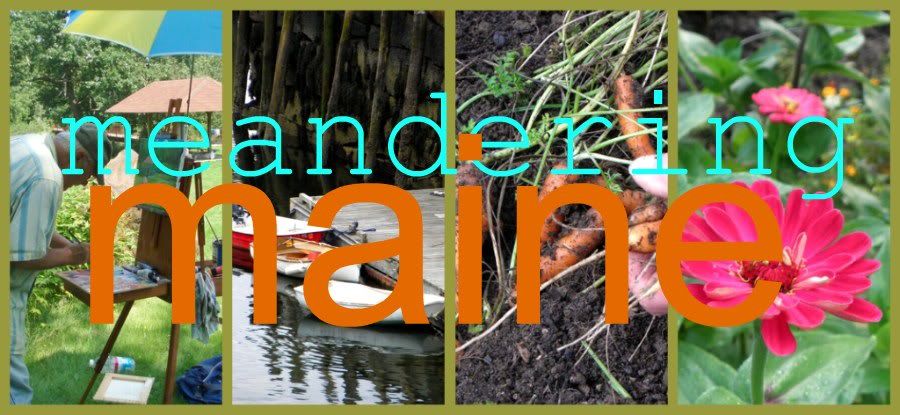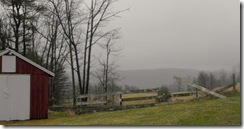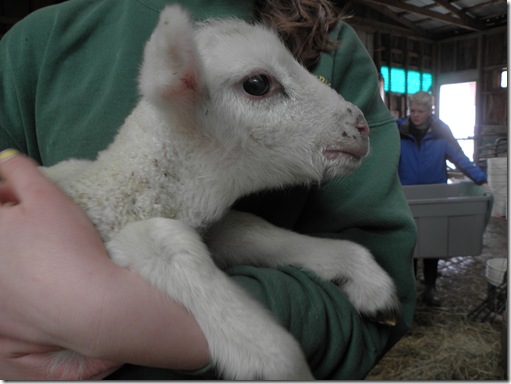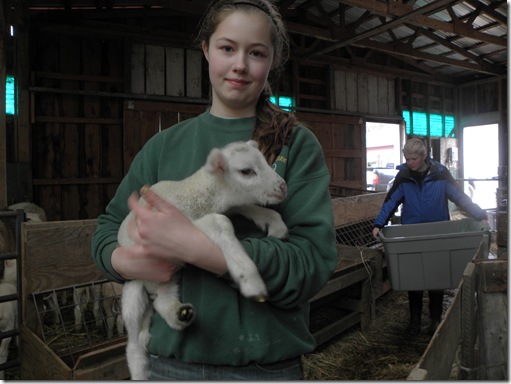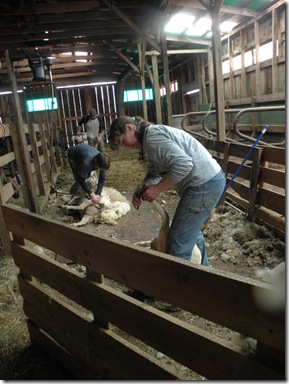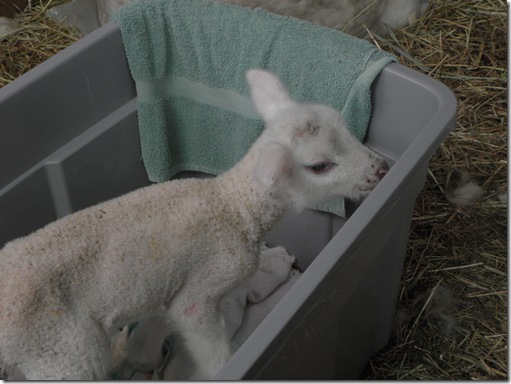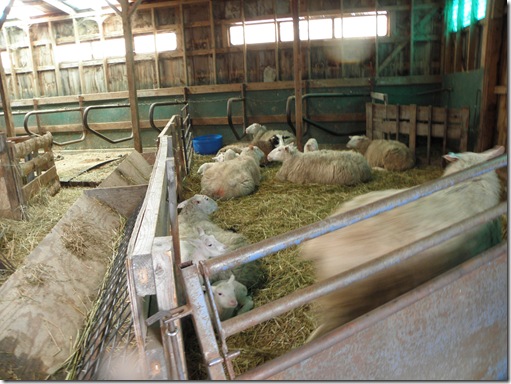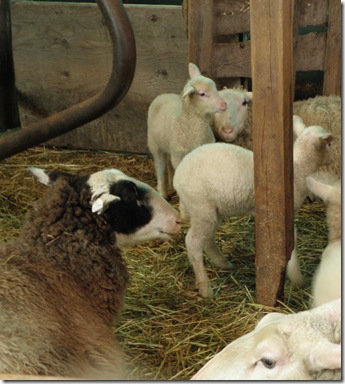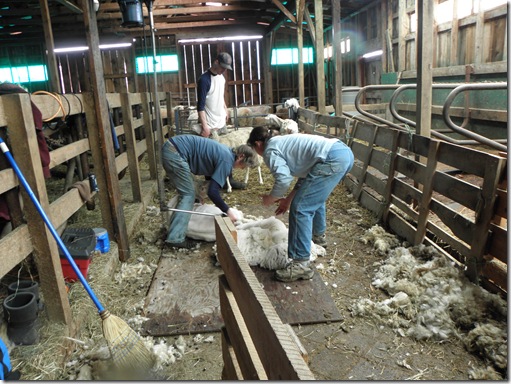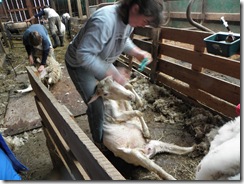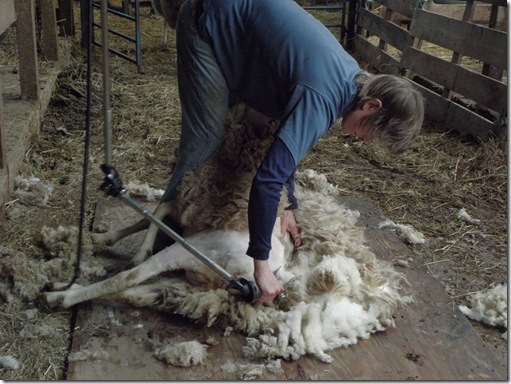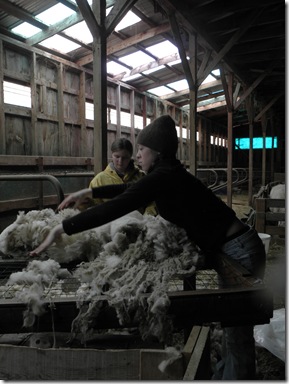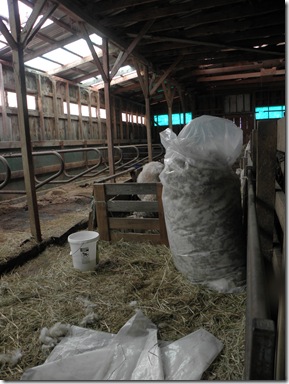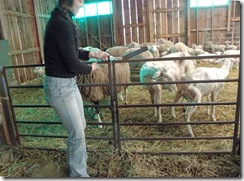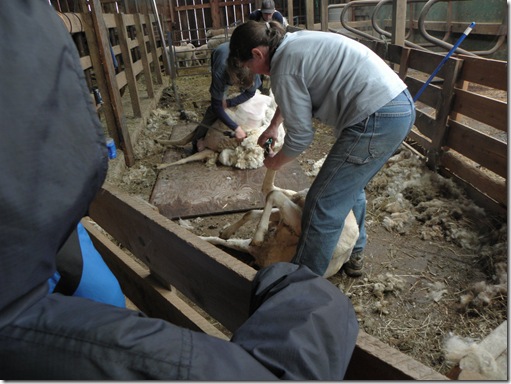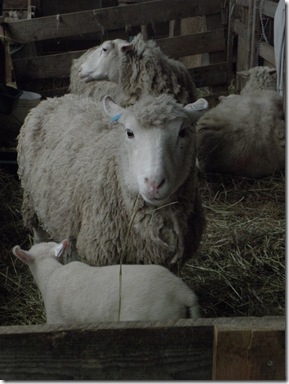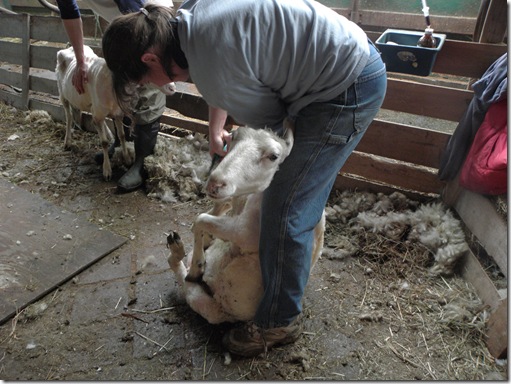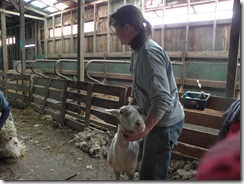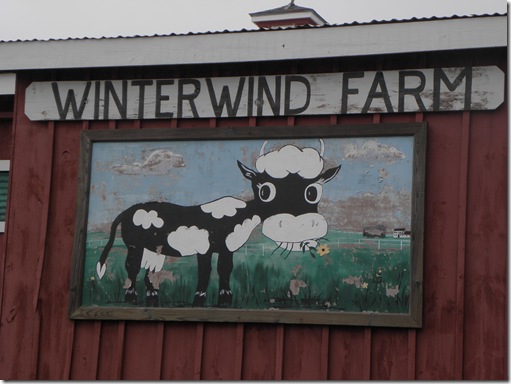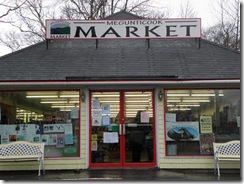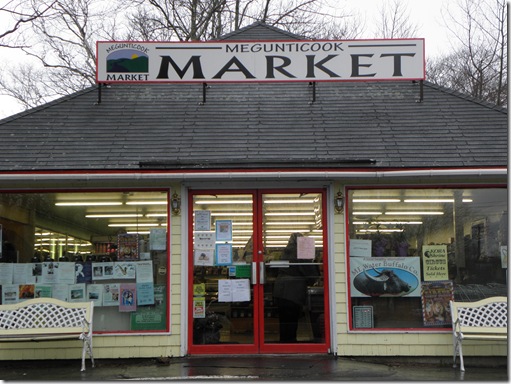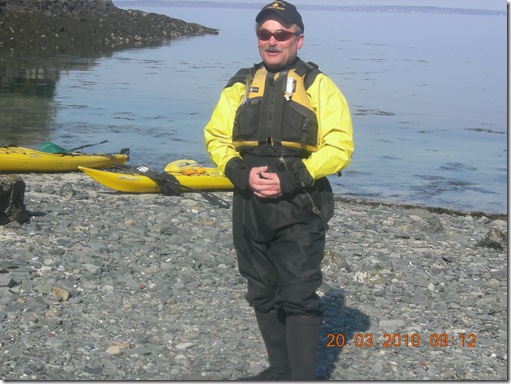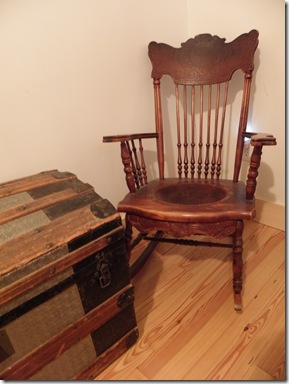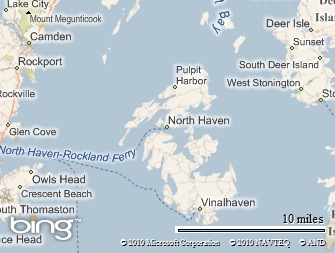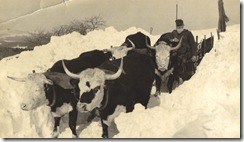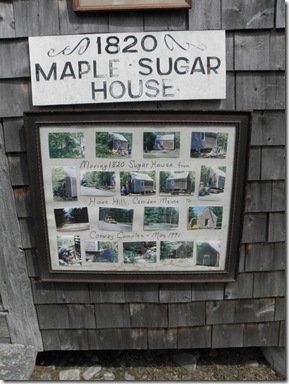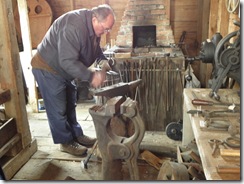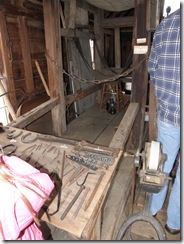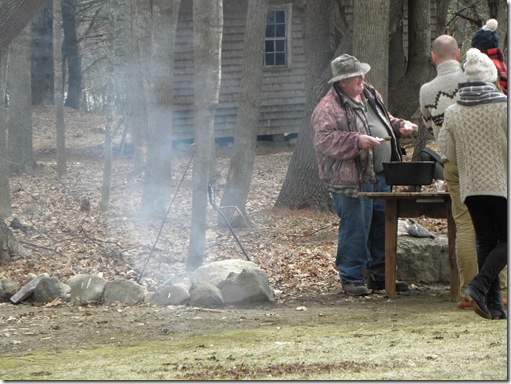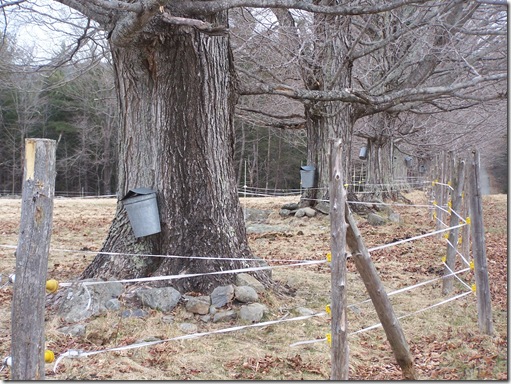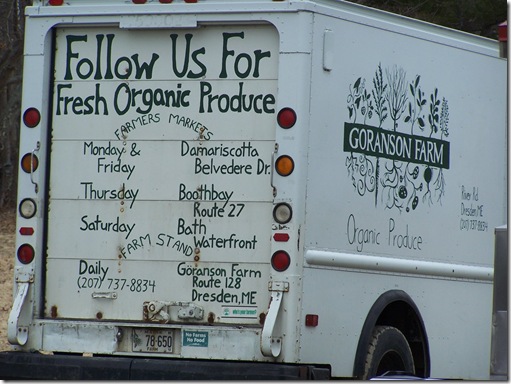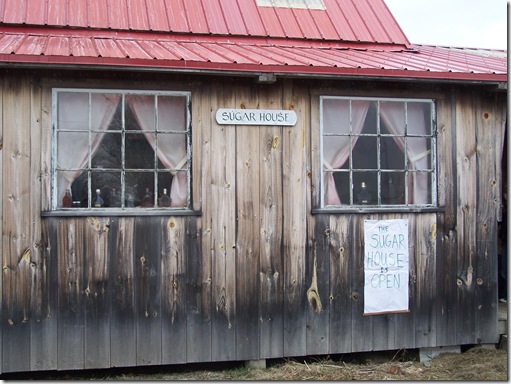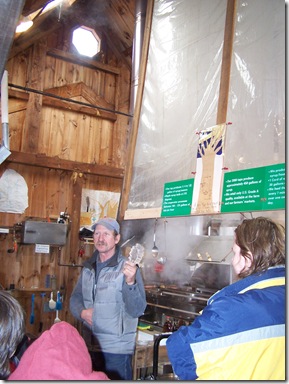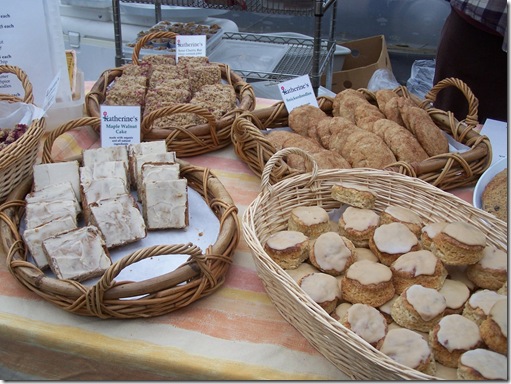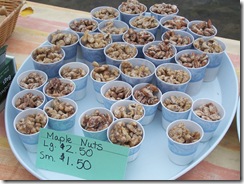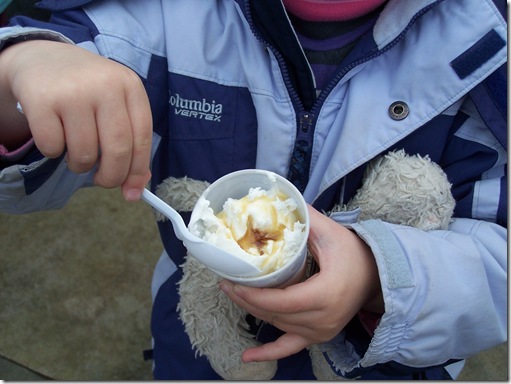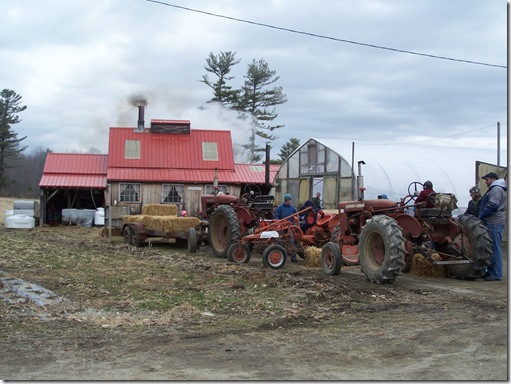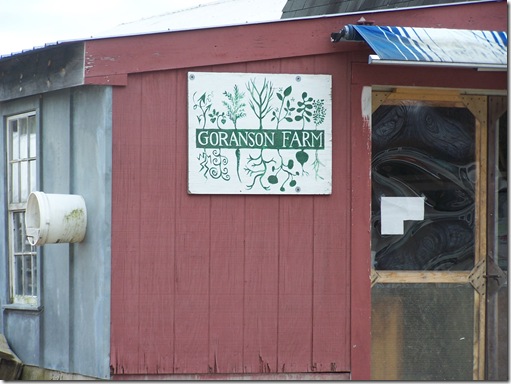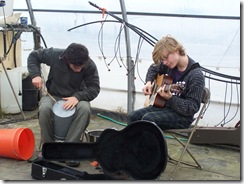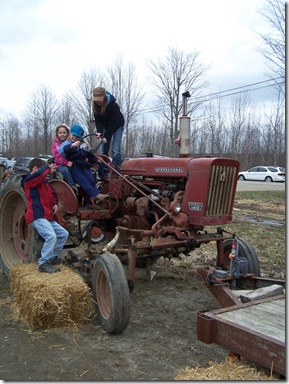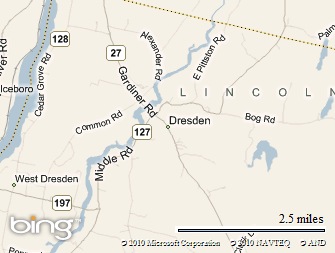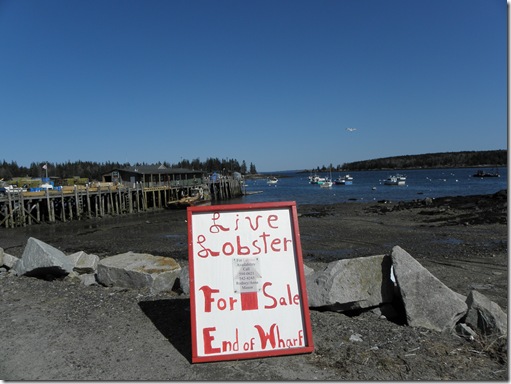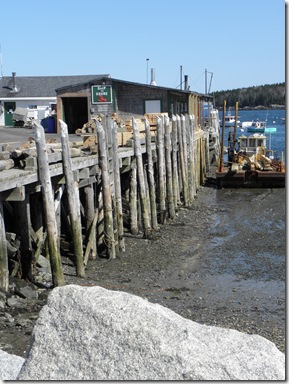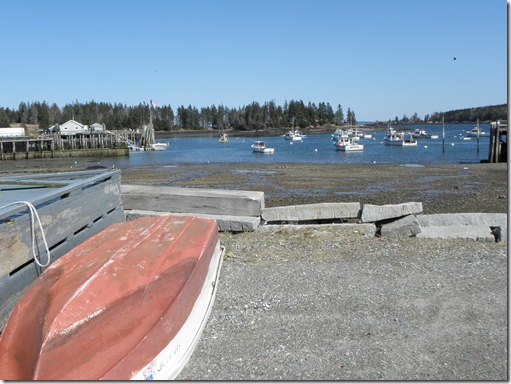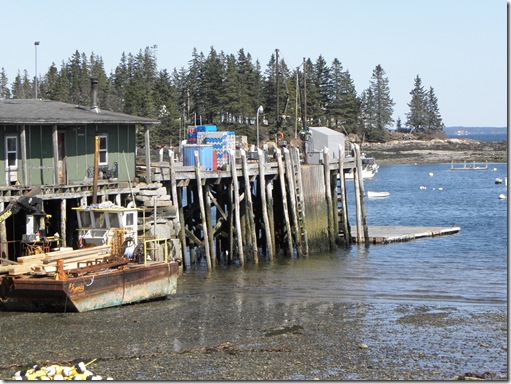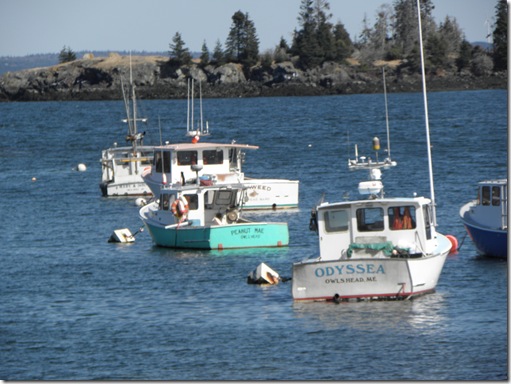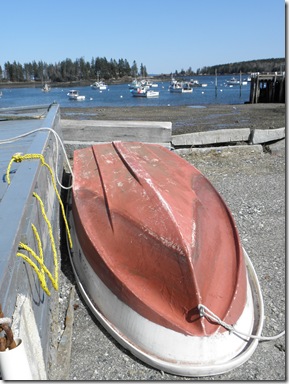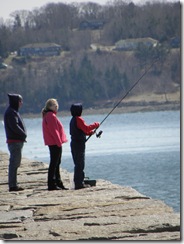Union
Wednesday, March 31, 2010
The Story of Stinkle the Lamb and her Ewe Friends
Stinkle lives on Ellsfarm in Union and she’s the only lamb there even though it’s a sheep and lamb farm. Stinkle doesn’t live in the barn, she lives in the house. The rest of the sheep are being kept on Winterwind Farm for a few more days.
Stinkle with Emmy, Perry Ell’s daughter.
Perry Ells, the owner of Ellsfarm, cleaning the hooves.
Today was sheep shearing day on Winterwind Farm where the sheep are being held until Ellsfarm is rebuilt. Perry normally does the shearing herself, but everything is behind this year due to the loss of her barn during the major February storm.
Today was a day out for Stinkle as well. It was her first time hearing and seeing all the other sheep. Her mom got sick while she was pregnant and very stressed during the storm of February 25 and 26. Stinkle’s mom and all the other sheep were transported to the Whittier’s farm Winterwind.
Winterwind Farm in Union
Stinkle’s mom fell into a trough the first night at Winterwind and remained there for several hours. Perry thought she had died when she found her. She hadn’t. AND she gave birth to Stinkle within 24 hours of being found. Stinkle was very sick when she was born, so the family took her into their home back on Ellsfarm to nurse her back to health. Yesterday was the first day Stinkle stood on her own.
Walking into the sheep barn this rainy morning.
Their tummies can’t be full when they are flipped on their backs to get clipped. That makes for some loud sheep during shearing.
Shearing a sheep.
Not all sheep have wool, but the dairy breed Ellsfarm chooses does have wool and must be sheared. Something new I learned today.
Cleaning the fleece.
The fleece bag. Some of the wool will be sold to the yarn makers but most will be sold in a wool pool.
Meredith returning the freshly sheared ewe.
There was an audience for all of this hard work.
Pretty cute. I don’t know her name and ALL the ewes have names. I’ll introduce you to a few.
You already met Stinkle. I am not sure if this ewe’s related to Stinkle or not. Perry has the genealogy down and knows all the ewes by name. This is Rachel Ward. I like Rachel, because we share the same first name.
This is Meryl Streep. Yes, all of the ewe’s are named after movie stars. According to Perry they start to take on the character as well. Angelina Jolie didn’t want to have her own lambs for years. She was always adopting others as her own. She finally had one (I didn’t get a picture of Angelina).
Where the sheep are being held until this Saturday when they are reunited with Stinkle on Ellsfarm.
Ellsfarm is a small 63 acre family owned sheep farm located on a hill top in Union. They milk up to 60 ewes in our Maine licensed & inspected dairy from March thru August. They sell liquid milk to a cheesemaker and occasionally to restaurants. Their sheep are raised "all natural "-- our grains do not contain any antibiotics or synthetic hormones. The flock is managed using the rotational grazing method, eating fresh grass from frost to frost (that's 6 months in Maine!), for the best tasting and healthiest milk possible.
You can buy Ellsfarm lamb at Megunticook Market in Camden and other mid-coast stores.
Tuesday, March 30, 2010
What you need to know to fish in Maine
.jpg)
This is general information intended to help you have an enjoyable Maine fishing trip on your own. I would be delighted to have you as a guest on one of my trips but If you want to get out there on your own this should help you get started!
Fishing is a fun way to introduce someone to the outdoors. Everyone is curious to see the critters that live in the water. Fishing is a great activity for any age and kids think of fishing as a new and interesting activity. Maine is an angler’s paradise with over 6000 lakes and ponds, thousands of miles of rivers and streams and a 3000 mile coast. Public access is available in many places including state maintained public boat launches on many of our bodies of water. If you choose to fish at a public boat access site make sure to stay out of the way of folks launching or loading their boats.
Licenses are required to fish in Maine in most cases and are available online and from many retailers. Licenses are included as part of a trip with Maine Outdoors. Not everyone needs a license though and there are options for the length of the license you buy.
On freshwater
Non Residents may buy licenses for one, three, seven or fifteen days; or the entire year.
Non Residents under 12 do not need a license. (if you are planning to assist a child and are over 12 you should have one though)
On Saltwater
In 2010 there is a Federal Registry requirement for saltwater anglers older than 16 you can apply online here. If you fish with a federally licensed captain or guide like Don Kleiner he or she will handle the registration and reorting for you.
It simplifies the trip to have your equipment all set up and ready to go. A little prior planning will make the day go more smoothly. Closed face spinning reels are the easiest for beginners to master. Keep in mind though that cheap equipment is just that; it may last for an outing or two but if you plan to make fishing a regular event, you will be much happier with rods and reels from a reputable outfitter.
Whether you choose to fish with lures or bait and the species of fish you are after will help you choose the type and size of hooks that you will need. Keep in mind that if you are fishing with bait you will need to have something to keep it in and arrange to get it ahead of time. Worms are easy; many small stores sell them and if kept in a cool place out of the sun will keep well. On a trip with Maine Outdoors all equipment is provided and if we are going to use bait it will be there ready to go.
Plan on catching a fish. How are you going to land it? Who will remove the hook? Are you going to keep it or release it? If you decide to keep it is it legal to keep? Freshwater laws and rules are available online or from the agent where you buy your license. A small pair of needle nose pliers and a rag can make removing hooks much simpler. If you decide to keep a few fish make sure you plan a way to keep them cool until you are ready to prepare them to eat. I keep a cooler on board if you want to keep fish and am happy to fillet your catch at the end of your trip to make preparation easier.
What can you catch? Focus on fish that live close to shore. The most easily caught species in freshwater are yellow perch and sunfish. In saltwater mackerel are easily caught from many docks and along the shore. Perch and sunfish will congregate around the weedy shallows where the water is warmer and they are easily caught.
Since you will be around the water having some simple safety equipment is important. Consider personal flotation devices (required for anyone under 10 in a boat) and always handy to have around. Sunscreen is important because you will likely be exposed to the full strength of the sun on the water and any reflection from the surface. At certain times of the year and day insect repellent may be a good idea. All of these items are part of what a guide provides on a trip with Maine Outdoors.
The best part is that every fishing trip is an adventure for all involved. Enjoy the adventure you never know what could happen next outdoors!
Text and photo by Don Kleiner, a Master Maine Guide, of Maine Outdoors. See Maine Outdoors and other cool things to do in Maine on Meandering Maine.
Monday, March 29, 2010
Where in Maine?
What is this popular Island in Frenchman Bay?
Hint-low tide gravel bar that Bill is standing on connects to one of the Porcupines.
By Bill Weir
Maine 365
Maine Antiques. A picture for a rainy day. This traveling trunk and rocking chair was my great, great, great grandmother Abby Wooster Howe’s. She brought them (before the 1890’s) from North Haven island where the Wooster family was one of the original settlers of the island to the Howe Homestead on Howe Hill in Camden. She married Herbert Howe who was born, lived and died in Camden. Herbert and Abby had three children Oscar, Alice and Walter mentioned in the previous blog. The rocking chair and trunk were given to me by my grandmother Charlotte Hunt Pease who is the granddaughter of Alice Howe Hunt. The rocking chair was on the Howe Homestead until Walter Howe’s death in 1990.
Sunday, March 28, 2010
A Maine Maple Sunday Close to Home
Maine Maple Sunday at the Conway Homestead and Museum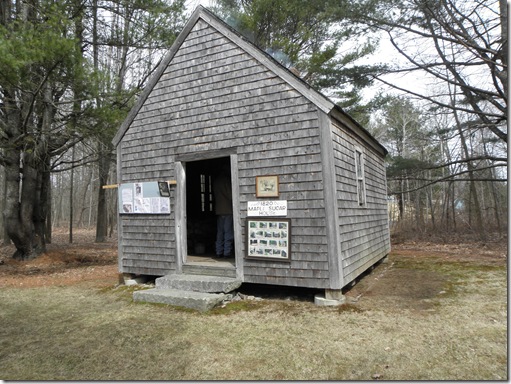
This 1820 Maple Sugar Shack at the Conway Homestead and Museum on the Camden-Rockport line was from my family’s Howe Homestead on Howe Hill in Camden. It was last owned by my great, great, great Uncle Walter Howe until it was donated to the Camden Historical Society in 1991. Walter and his brother Oscar Howe both remained single and worked on the farmstead their entire lives. My great, great grandmother Alice Howe Hunt was the only sibling in the family to marry. She did return to the Howe Hill Homestead in her elderly years to live with her brother Walter for the remainder of her life.
My Uncle Oscar working the Oxen on the Howe Homestead. Oscar died relatively young of a blood infection because he refused to see a doctor after cutting himself on a fence.
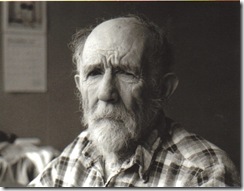
My Uncle Walter who lived into his late nineties, the last Howe to own our family farm. Both Oscar and Walter made Maine Maple Syrup in the Sugar House pictured above.
Pictures of the Maple Sugar House being moved from Howe Hill on the front of the barn.
A demonstration today at the blacksmith shop at the Conway Homestead and Museum.
An outdoor fire and demonstration for Maine Maple Sunday at the Conway Homestead and Museum.
We are on a mission to find the coolest places in Maine.
Love Maine!
Goranson Farm in Dresden
Photos and text by Jessica Nelson
It was a brisk Sunday morning visiting Goranson Farm in Dresden. We enjoyed all the treats, education and even some entertainment! Pull up a chair and bowl of vanilla ice cream drizzled with maple syrup and enjoy the sights!
After catching the tail end of a demonstration in the sugar house today, I now realize why the season has been cut so short for Maine’s maple syrup producers. Our crazy spring weather here has not been beneficial for them. It is amazing to learn about all the details that go into making that wicked good stuff!
Pure Maine maple syrup with a hint of the great north woods in it, has been brightening the flavor of fine, downeast food since long before the colonists arrived. Now, hundreds of years later, the quality is excellent, the degree of sweetness is fixed by law, and the uniquely delicious taste still varies as it always has. Sometimes the syrup is dark and rich, sometimes pale gold and delicate. It all depends on the soil and terrain, the wind and the weather, just like wine.
Maine's maple syrup producers, like winemakers, take a lot of personal pride in their product. The art of making sugar and syrup from the sap of the maple tree (Acer saccharum) was developed by Native Americans of the Northeast. For them it was the all-purpose seasoning, used as we might use salt today. It was also one of their staple foods, a primary source of nourishment in the early spring season, so valuable and portable it was often used as money. Important festivals celebrated the sugar harvest and there was much merriment and feasting when the last elm bark bucket had been emptied and a year's supply of sugar safely made. European settlers were quick to learn about this tasty natural resource, and they brought something very important to trade for the Indian's knowledge - iron kettles. Until the Europeans arrived, there was no fireproof vessels in in Eastern North America. The Indians boiled the syrup by dropping red-hot stones into thick wooden containers full of sap.
Iron kettles made the work of sugar boiling much easier (and the product a lot cleaner). They bubbled steadily, every spring, throughout the early centuries of our history, providing the self-sufficient New England farmers with an ample supply of home-grown sweetness. It was much cheaper and easier to get than imported cane sugar. And cane sugar, furthermore, was part of the chain of slavery. Maple sugar, being made by free men, was better suited to the Yankee temperament.
Of course, appreciation for maple sugar went way beyond New England. Thomas Jefferson tried several times to establish a "sugar bush" at Monticello, and there were even a few attempts to start a maple industry in Europe. They all failed. The trees grew all right, but they yielded no sweetness. The sugar in maple sap only appears where warm, sunny days and below-freezing nights follow each other for days on end, as they do in Maine's long, slow spring.
Text from Maine Maple Producers.com
Saturday, March 27, 2010
Maine 365
Some pictures of today’s Maine Meandering. Where was this photo taken?
Who says you need warm weather to enjoy a beautiful sunny day in Maine?
Rockland Breakwater.
